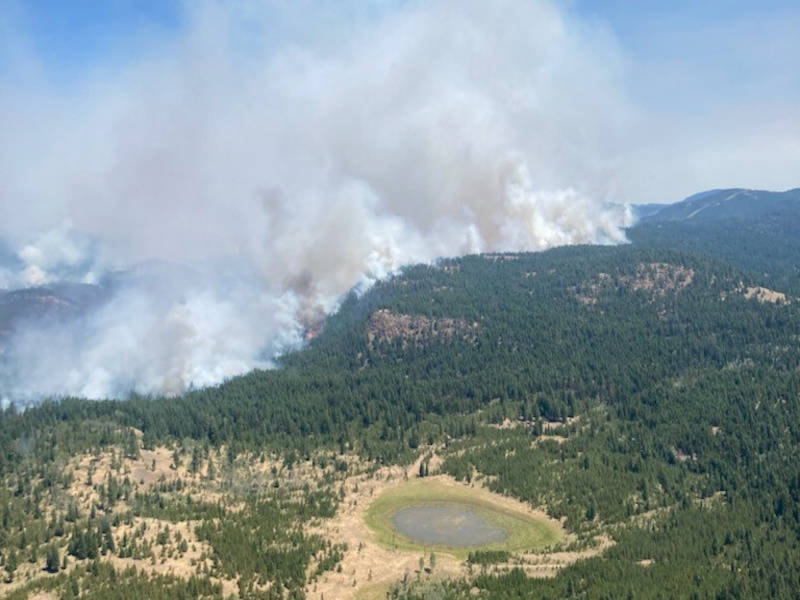With temperatures expected to increase over the coming days, BC Wildfire has brought in extra resources to deal with some of the largest fires in the Okanagan.
The large fires will continue to burn steadily, but the lack of wind will reduce the chance of them flaring up, and give crews a chance to make progress against the fires.
The lack of wind will assist with efforts on the ground, but it comes with its own drawbacks, such as making the use of aerial resources more difficult with the amount of smoke in the air.
“We do expect to see stagnant smoke in the coming days,” said Rob Schweitzer, the director of fire centre operations for the BC Wildfire Service. He spoke with media on Tuesday, providing an update on what’s being done on the Okanagan wildfire front.
“It appears we’ll see the weather change by this Friday and some of the smoke start to clear out.”
Those higher temperatures aren’t great, but the stable conditions that come with a lack of wind also brings a lowered risk of lightning strikes without precipitation, which is the greater concern when it comes to new fires.
“The forecast is showing in the next few days a kind of mixed-bag, temperatures are supposed to increase, up to almost 40 C in Okanagan by the weekend with lower relative humidity,” said Schweitzer. “From our perspective, those fires in the South Okanagan and all the way up in the White Rock (Lake) area, those fuel types are very susceptible to wind-driven events, so wind is our greatest enemy.”
There are currently 88 active fires burning in the Kamloops fire centre.
This fire season has led to the province calling on and receiving support from out of the province, with many of those additional resources stationed in the Okanagan.
There are 100 firefighters from Quebec who have been assigned to the Brenda Creek, White Rock Lake and Thomas Creek fires.
Also assisting on the Thomas Creek Fire are 90 members of the Canadian Armed Forces, who are expected to get started on the fire on July 28.
More have arrived in Vernon, but they have not been assigned to a fire yet.
The Nk’Mip Fire has received its own reinforcements in the form of 101 firefighters from Mexico, who are staging out of the South Okanagan Secondary School.
Another 34 firefighters from Australia arrived on July 26, and will be resting briefly until their deployment is chosen.
As of July 26, there are 3,558 people involved in firefighting operations in B.C., including 1,252 contractors, said the B.C. government.
During the Tuesday briefing with the media, individuals who had chosen to ignore evacuation orders were directly singled out for being a drain on resources, including helicopters and aircraft, that would otherwise be better used fighting the fires.
READ MORE: Follow local evacuation orders, B.C. Wildfire Service urges
“The conditions we are seeing this year are some of the most extreme we have ever seen,” said Schweitzer.
Due to swiftly changing conditions and the speed with which a fire can rage through an area can leave evacuation routes cut off, and people who have been ordered to leave should do so immediately while those routes are open.
To report a typo, email: editor@pentictonwesternnews.com.
<>@PentictonNews
newstips@pentictonwesternnews.com
Like us on Facebook and follow us on Twitter.
